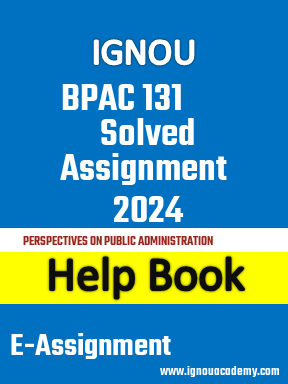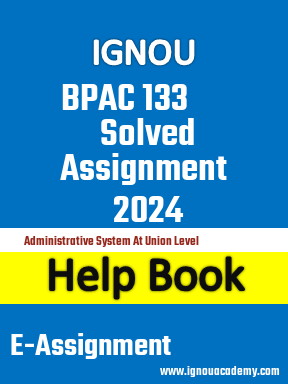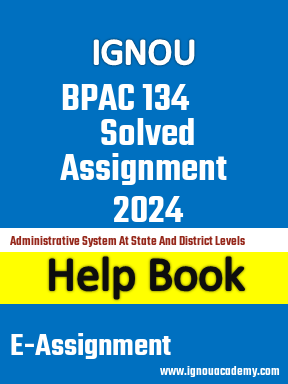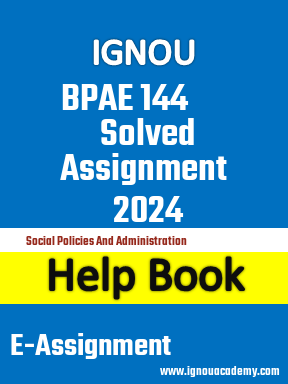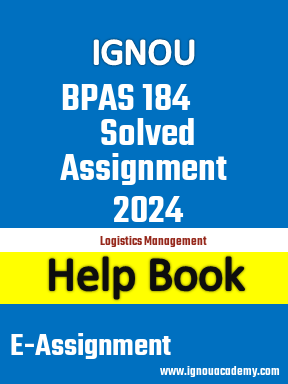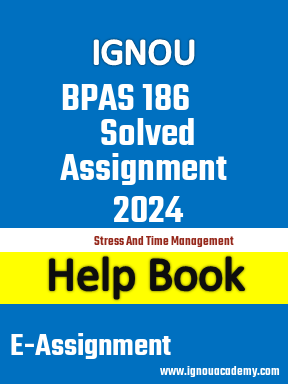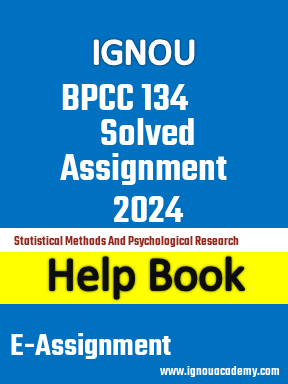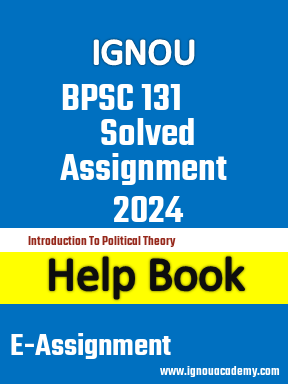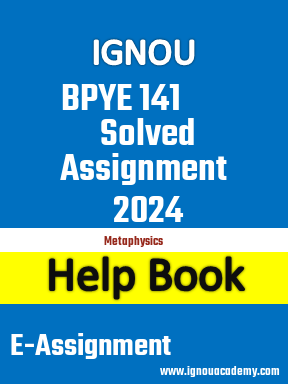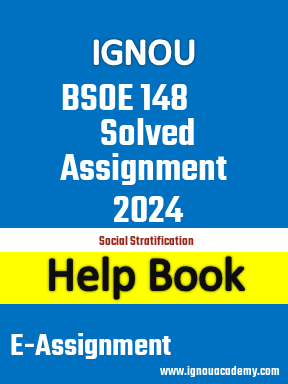My Cart
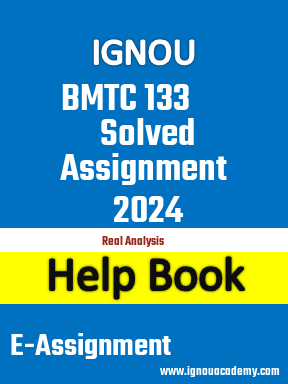
|
|
IGNOU BMTC 133 Real Analysis Solved Assignment 2024
IGNOU BMTC 133 Real Analysis Solved Assignment 2024|
|
| Title Name | ignou BMTC 133 solved assignment 2024 |
|---|---|
| Type | Soft Copy (E-Assignment) .pdf |
| University | IGNOU |
| Degree | BACHELOR DEGREE PROGRAMMES |
| Course Code | BAG |
| Course Name | BACHELOR OF ARTS |
| Subject Code | BMTC 133 |
| Subject Name | Real Analysis |
| Year | 2024 |
| Session | - |
| Language | English Medium |
| Assignment Code | BMTC-133/Assignmentt-1//2024 |
| Product Description | Assignment of BAG (BACHELOR OF ARTS) 2024. Latest BMTC 133 2024 Solved Assignment Solutions |
| Last Date of IGNOU Assignment Submission | Last Date of Submission of IGNOU BMTC-133 (BAG) 2024 Assignment is for January 2024 Session: 30th September, 2024 (for December 2024 Term End Exam). Semester Wise January 2024 Session: 30th March, 2024 (for June 2024 Term End Exam). July 2024 Session: 30th September, 2024 (for December 2024 Term End Exam). |
| Assignment Code | BMTC 133/2024 |
|
|
Questions Included in this Help Book
Ques 1.
Which of the following statements are true or false? Give reasons for your answers in the form of a short proof or counter-example, whichever is appropriate:
i) Every infinite set is an open set.
ii) The negation of p∧ ~ q is p → q.
iii) −1is a limit point of the interval ]−2 ,1],
iv) The necessary condition for a function to be integrable is that it is continuous.
v) The function defined by
is differentiable at
Ques 2.
Give an example for each of the following.
i) A set in with a unique limit point.
ii) A set in whose all points except the one are its limit points.
iii) A set having no limit point.
iv) A set S with
v) A bijection from to
Ques 3.
Give an example of a divergent sequence which has two convergent subsequences. Justify your claim.
Ques 4.
The product of two divergent sequences is divergent. True or false? Justify.
Ques 5.
Let be any sequence. Show that
iff for every ε > 0, there exists some
such that n ≥ N implies
Ques 6.
d) Show that is a Cauchy sequence.
Ques 7.
Evaluate
Ques 8.
Determine the points of discontinuity of the function f and the nature of discontinuity at each of those points:
Also check whether the function f is derivable at x = .1
Ques 9.
Find the following limit
Ques 10.
Prove that a strictly decreasing function is always one-one
Ques 11.
Determine the local minimum and local maximum values of the function f defined by
Ques 12.
Let
be a function defined by
where
Find the values of m and n such that the Rolle’s Theorem holds for the function
Ques 13.
Let be a differentiable function on
and
Show that, if
and
then
must have a local maximum at
.
Ques 14.
Suppose that is continuous on
and differentiable on
and that f )0( = ,0 f )1( = ,1 f )2( = .1 (i)
Show that there exists such that
Show that there exists such that
(iii) Show that there exists such that .
Ques 15.
Test the following series for convergence.
(i)
(ii)
Ques 16.
Show that is conditionally convergent.
Ques 17.
Use Cauchy’s Mean Value Theorem to prove that:
Ques 18.
Using Weiestrass M-test, show that the following series converges uniformly.
Ques 19.
Use the Fundamental Theorem of Integral Calculus to evaluate the integral
Ques 20.
Show that the function defined by
has an inverse by applying the inverse function theorem. Find its inverse also.
Ques 21.
Check whether the series is uniformly convergent or not, wher
Ques 22.
Show that the series does not converge uniformly on the interval
Ques 23.
If the power series converges uniformly in
then so does
True or false? Justify.
|
|
Related Assignments
IGNOU Doubts & Queries
Click to Contact Us
Call - 9199852182 Call - 9852900088 myabhasolutions@gmail.com WhatsApp - 9852900088









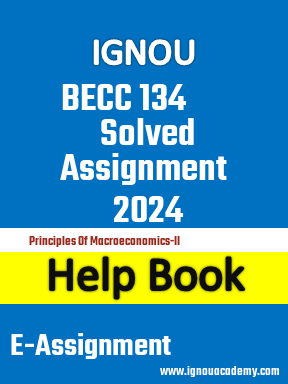






























&y=&topic=&dl=&k=.png)



